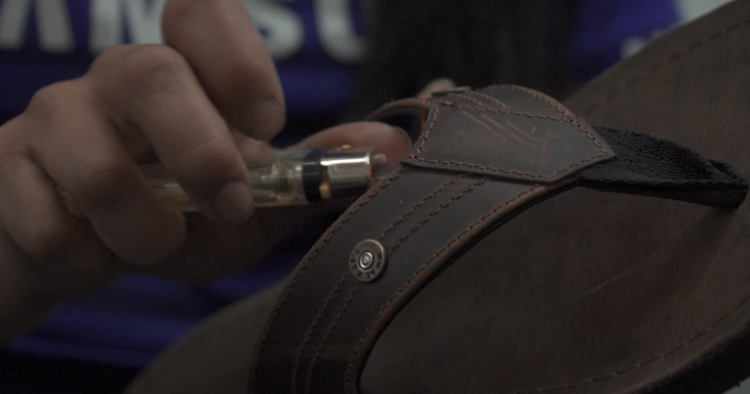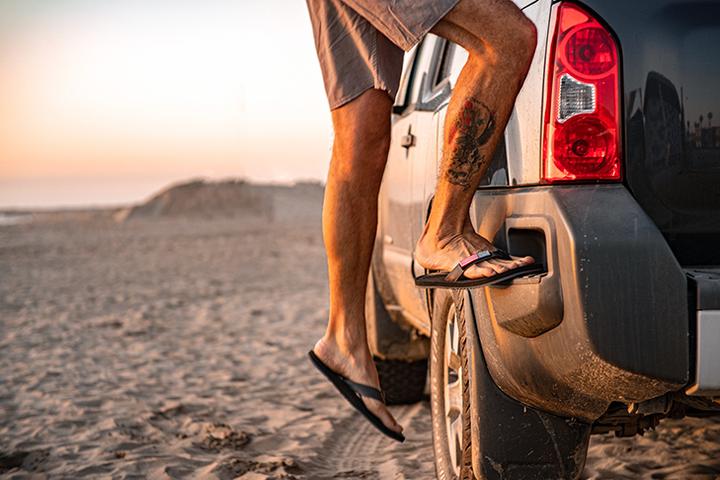
Matthew “Griff” Griffin’s road to entrepreneurship began in Afghanistan, where he had done multiple tours as an Army Ranger. A chance meeting at a 2009 military conference there led him to visit a combat boot factory in Kabul, where a new acquaintance showed him around. It was during that visit that he came across the inspiration for Combat Flip-Flops – and a new direction in life.
Now, more than a decade later, Griffin and his partners manufacture the flip-flops in Bogotá, Colombia, and have expanded into other types of products, with outposts in Laos, Kabul and at his home base, in Washington State. Embedded in the company’s ethos is a desire to give back: Combat Flip-Flops contributes to Aid Afghanistan for Education (AAE), Mines Advisory Group (MAG) and The Station Foundation (TSF). Griffin recently spoke with Military Made about what drove him to launch his business, what hurdles he encountered, and his advice for other entrepreneurs-to-be.
Hiring America: Going back to the beginning, what inspired you to start Combat Flip-Flops? What was the genesis of the company?
Matthew Griffin: I did a bunch of tours with the Rangers. But even then, I knew we weren’t going to make a difference. And this was back in like 2003. There’s no amount of fighter planes, armored vehicles, diplomats and programs that are going to make a difference in these war zones when the women can’t read and people don’t have jobs.
I saw it throughout Africa other areas of Asia, and other places. When you travel these areas they’re typically pretty dicey because people who don’t have jobs typically resort to crime to feed their families. So when I traveled to these places the [areas where I stayed, in contrast, were safe] and flourishing with small business. Those business owners watch after their customers. Because those customers provide for their families. It’s a really simple chain to follow.
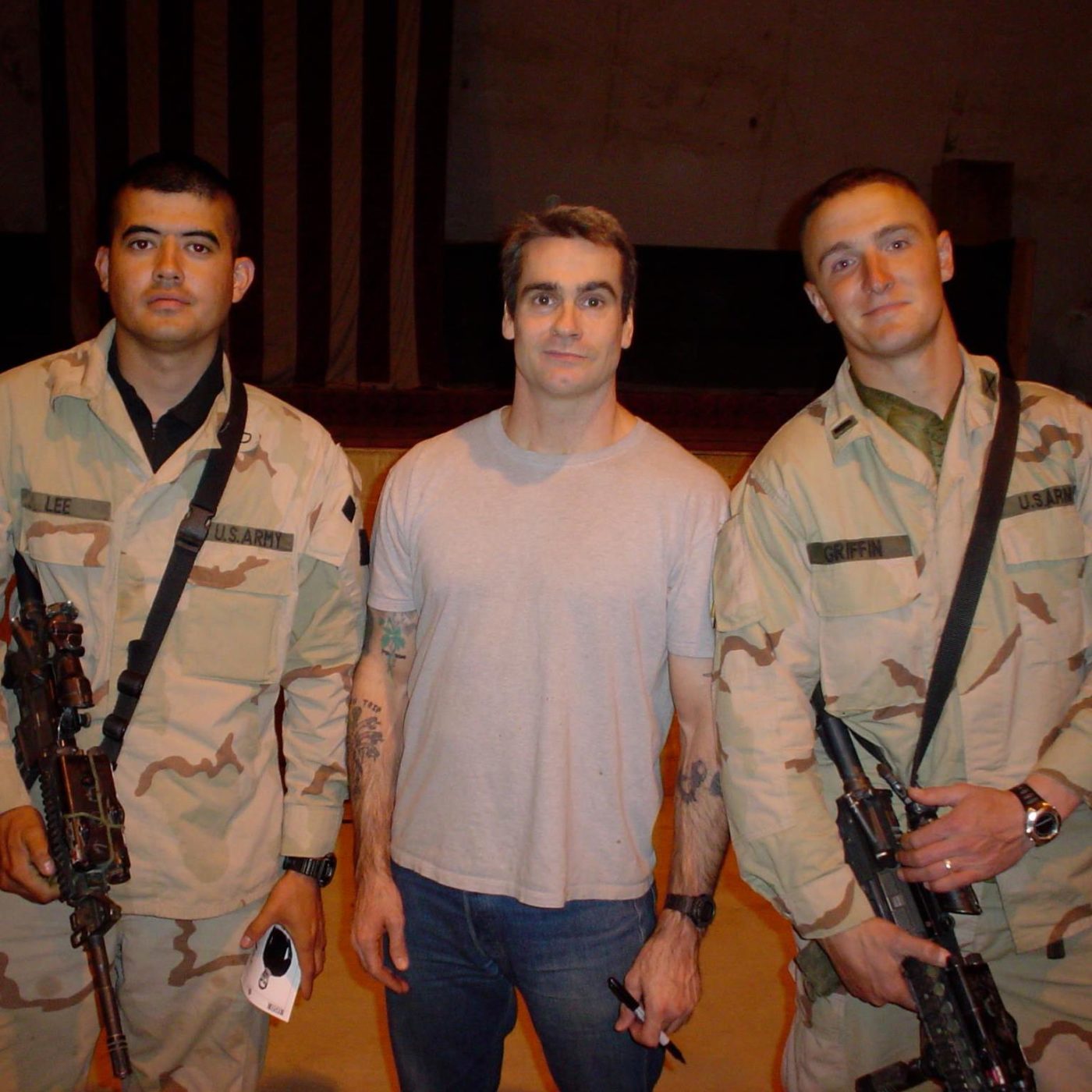
HA: So you had observed this phenomenon for years when, in 2009, you came across inspiration for Combat Flip-Flops at a Kabul factory. Can you tell me about your visit there? What did you see that inspired you to run with it?
MG: I opened the door, there were hundreds of people working. Everybody was in uniform. People were smiling. And they’re making over 1000 pairs of combat boots a day they could withstand the rigors of Afghanistan, which is something American manufacturers couldn’t do for a few years.
They were taking people with no skills, no education, no literacy off the street, teaching them how to read. Teaching them how to make things. Teaching how to do these jobs. And each one of these people was supporting five to 13 family members. This factory of 300 hundred people was supporting 1500 to 4000 people. For a super minimal investment on behalf of the international community to make this happen. It was really inspiring and, to be honest, it was the first positive thing I’d seen since I’d been involved in the war.
This is literally when [the people in charge there] told me they were going to shut the factory down. I’m standing there just infuriated. I was processing these emotions, when I saw this funny-looking flip-flop. It was a flip-flop shape attached to the sole of a combat boot.
HA: So What happened next?
MG: said, look, do you mind if I run with this? I walked out of the factory, went back to my hotel and sat down and ideated for a bit. Then I call my Ranger Buddy, a guy that I’ve served with on a couple tours, we always talked small businesses together. I asked him if the domain combat flip-flops was open, and it was. So in one night from Afghanistan with a crappy dial-up connection we got the website for $2.99, all the social media handles. And then we started a company.
HA: How did you transfer the business to the U.S. and get it off the ground?
MG: It was the largest amount of chaos you’ve ever imagined.
We really sat on the idea in 2010, then my brother came on as our operations officer. And then I sold everything of value so that we could make some prototypes and samples. We launched some of the products on social media and blogs and people liked it. So I sold more guns and some more motorcycles, and that paid for enough for samples.
In January 2012 we went to the Las Vegas Shot Show — a shooting and hunting outdoor trade show where all the military guys are. We brought our flip-flops in backpacks and then we found every blogger that we possibly could and we showed them the stuff. They took photos of it and they posted it and we pre-sold around 4000 pairs.
But then the Obama administration announced the end of the Afghan war, which started killing all the contracts to all the factories. [There were delays.] In August, my brother and I flew to Kabul to pick up our order and found the supplier had screwed us a little bit. We found thousands of pairs of beautifully assembled flip-flops at a bad material and had to give them all away.
They returned the money, but next, all the American boot contracts had been canceled. So we ended up shipping the entire container to my house and built a guerilla flip-flop factory in my garage. We got really smart on production and adhesives and family and friends and fellow vets turned out 4000 pairs for customers in early 2013. Some people had waited 18 months for their first pair.
HA: Was that, ultimately, what allowed you to get Combat Flip-Flops up and running?
MG: Yes. The people that pre-purchased and gave us the cash that we needed to start it. And now we manufacture our footwear in Bogotá, Colombia, which is very similar to Afghanistan in the way that they have a narco-financed insurgency. A mountainous terrain. War on drugs, war on terror – same thing.
Then we started making jewelry made out of landmines in Laos. And then sarongs and scarves back in Afghanistan, and prototype stuff here [in Washington].
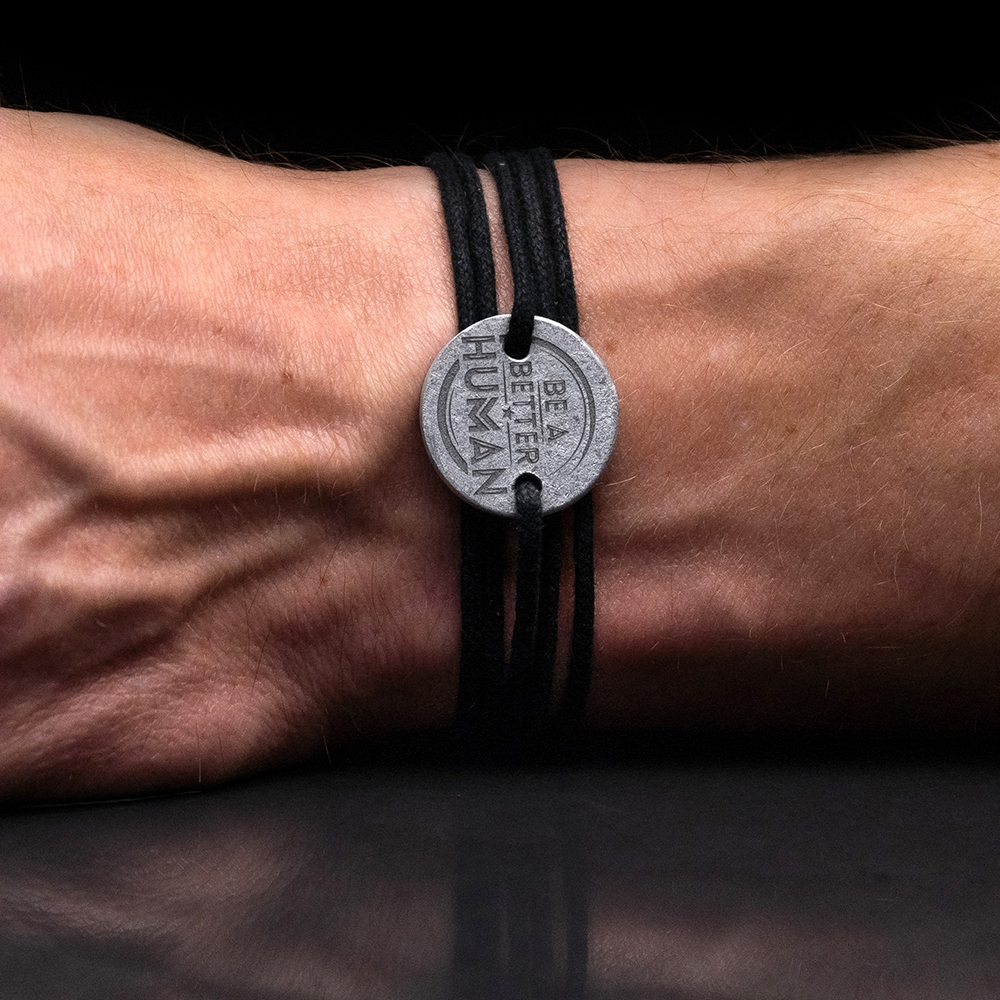
HA: What kind of challenges that posed or maybe things that you learned during that transition from military to civilian life?
MG: It was scary. I wanted to be out of the military in the worst way, I didn’t have the best experience with the army so I was doing everything I could to get my paperwork signed and just get out.
I was hustling on weekends, I went to all these job fairs, I got a job building homes. I took the first job offered to me, but at a 75% pay cut. We had two kids. I was struggling through civilian life, it’s tough. How do you manage daycare? How do you do all these things and still maintain some semblance of a person and recover from what you did in the military? It’s overwhelming.
HA: Who or what did you lean on to get through that time?
MG:I drank a lot. I mean a lot of us do. It’s a problem. And then you know you finally get to a point where you can’t anymore. I wasn’t this person before I joined the military. You were somebody different and you can’t let these experiences shape the rest of your life. It’s who you were not who you are. A lot of guys keep tying themselves back to their time in the military, it’s the apex of them as a person in life. I don’t believe that.
Instead, people should say, you guys are skilled folks, we want you back in our communities. Let’s use your talent and skills. You might need to take a few years before you’re ready to contribute to the community, it takes time. Everybody wants to solve it right now. But you can’t work through that stuff in six weeks. It takes years. You need patience and time and work your way through.
HA: What advice do you have for other veterans who want to start their own businesses?
MG:I don’t recommend somebody starting a business right out of the military. I think you should go to work for somebody else. Learn those civilian ways of the world with a decent paycheck and health care, and everything covered for you in the best way possible.
And then if you really feel compelled to start a business, you’re going to start a business regardless. My theory is to spend two-to-three years learning, with a decent paycheck and two weeks of vacation. Because once you start a business, you’re not going to have a decent paycheck and you’re not gonna have a vacation for a few years.
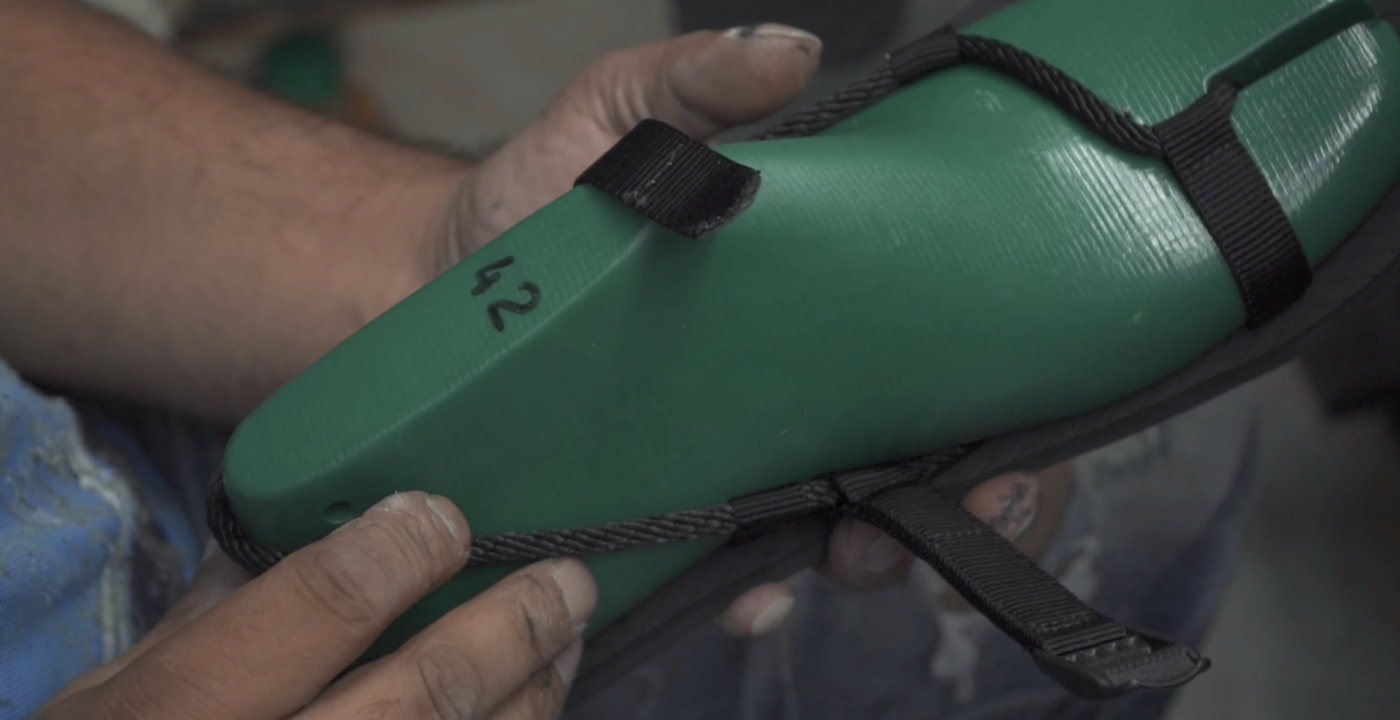
HA: What are you most proud of in the terms of the business you’ve built?
MG: It’s a family-owned business. My brother, Andy, is my chief operations officer. My brother in arms, Lee, a guy that I served with the mobile deployments, is our chief marketing officer. Our customer service manager is my neighbor. She lives down the street and her son runs our media department. It’s five of us running all of this. We’re doing it out of 1,000 square feet and in an old home in Washington.
To learn more about Combat Flip-Flops, visit their website.
To support more small veteran entrepreneurs like Matthew, visit MilitaryMade.com.
